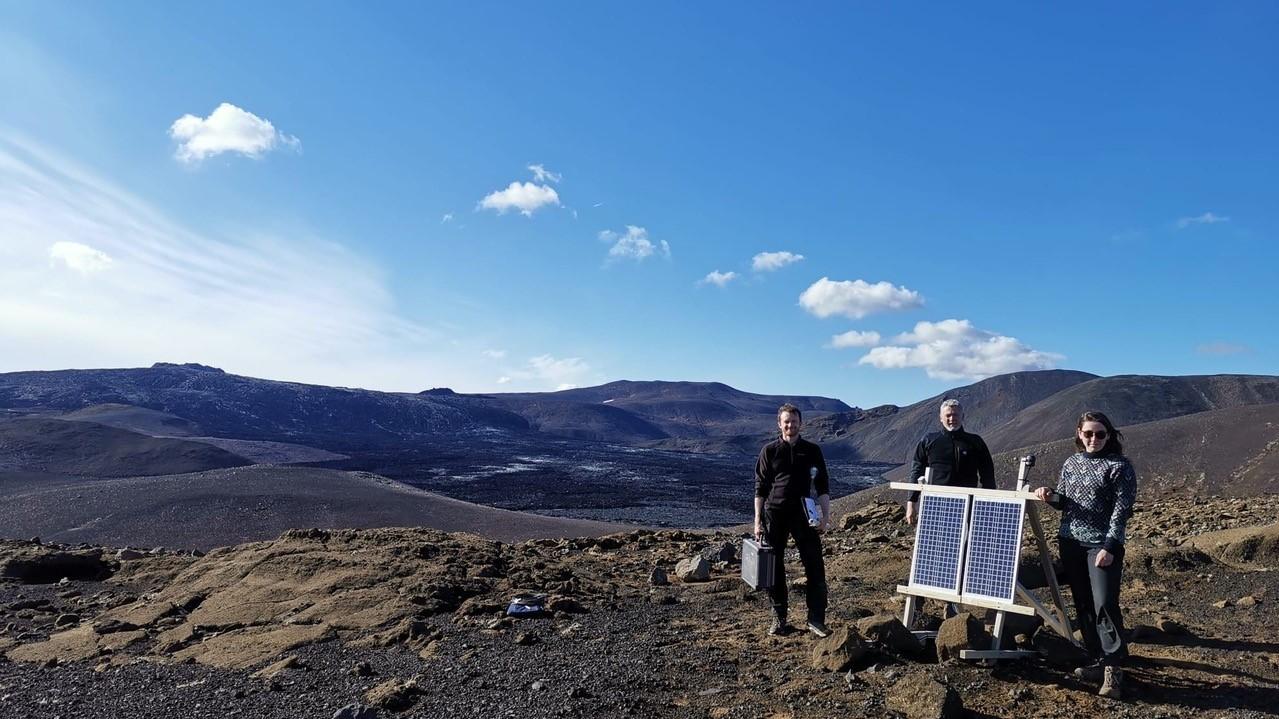
Submitted by Dr C.M. Martin-Jones on Mon, 13/11/2023 - 17:15
Following a swarm of earthquakes on Iceland’s Reykjanes Peninsula, the country is now on high alert over a possible eruption. There have been three eruptions in the Reykjanes area in the last three years: one in 2021, 2022 and 2023. Scientists are carefully watching the unfolding seismic activity and ground deformation, which is a symptom of magma rising beneath the surface.
Over recent weeks, Tom Winder, a research associate with the Cambridge Volcano Seismology Group who has recently moved to the University of Iceland, has been on fieldwork in the Reykjanes Peninsula.
He has been servicing existing seismic stations and installing new ones around Svartsengi as part of an ongoing collaboration between the Universities of Iceland and Cambridge.
Some of the stations are located within just a few kilometres of the coastal town, Grindavík, which has now been evacuated because it is thought that a fissure might open next to the town.
The area has been rattled by a series of earthquakes since October, but on Friday 10th November the shaking peaked and shifted toward Grindavík. This rapid jump in seismic activity was caused by a sheet of magma (or dyke) piercing through rocks towards the surface.
Commenting in a National Geographic article, Winder said the speed of that transition was particularly startling. He also said the location of this episode caught many people by surprise, because previous eruptions over the last three years have been focussed near Fagradalsfjall.
A late night yesterday doing maintenance on the telemetry at SVAR, and installing a last few spare seismometers around #Svartsengi on the #Reykjanes Peninsula. Looks like we were just in time!!
Now the anxious wait to see if any will need rescuing from a possible eruption... pic.twitter.com/R6lyD6Cv5y
— Tom Winder (@twinderseis) November 10, 2023
The Volcano Seismology group have a larger network of seismometers across Iceland, as part of collaborations with the University of Iceland, the Iceland Geosurvey, the Icelandic Meteorological Office, the Czech Academy of Sciences, and Universität Potsdam. The team are also working with petrologists including Cambridge’s John Maclennan to understand magmatic conditions.
